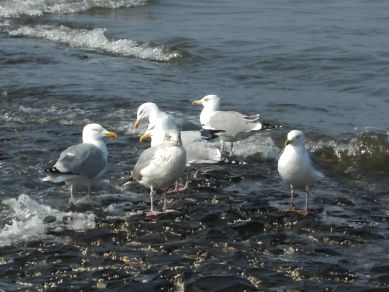Organic pollutants
Subproject 3: Chemistry of the Jade Bay
Organic pollutants in surface sediments of theJade Bay
 |
Dr. Barbara Scholz-Böttcher Angelika Klugkist |
The aim of this sub-project is to analyze selected pollutants and organic biomarkers in surface sediments of the Jade Bay. Thus, the current contamination of the sediments and transport dynamics of organic components shall be identified. So far, there are only few data covering the whole investigation area. The contents of polycyclic aromatic hydrocarbons (16 EPA-PAH) and petroleum hydrocarbons will be studied using a dense sampling grid. The contents of the pollutants will be interpreted by taking the fine grain size fraction and the organic matter content into account. The PAHs are a ubiquitary, toxicological relevant element group which is closely related to processes of combustion (dominated by traffic and industry). Thus, inputs can be identified on a smaller and broader scale. Obvious sources of petroleum hydrocarbons are the local shipping and oil refining. In parallel, we plan to record relevant indicator components which can be attributed directly or indirectly to natural geochemical processes (e.g. facies indicators) or anthropogenic activities (e.g. tensides). Their spatial pattern in the investigation area will provide information about sources, current-induced distribution in the sediment and possible formation of sinks. The sample grid of these investigations is the same as that of the subprojects “Heavy metals” and “Benthos ecology” and was sampled in common.This will enhance complex data correlation with maximum comparability of basic conditions. Furthermore, specific components will be studied in selected samples and, if necessary, suspended particles will be analyzed. Like all results, the data will be transferred into the “Data Warehouse” and form the basis for substance-specific contour plots and distribution models. They shall illustrate the status-quo of the Jade Bay as well as the dynamic of the substance groups we investigated.

![[Translate to English:]](/f/5/_processed_/3/2/csm_ICBM-Logo-transparent-_91fe1c6774.png)